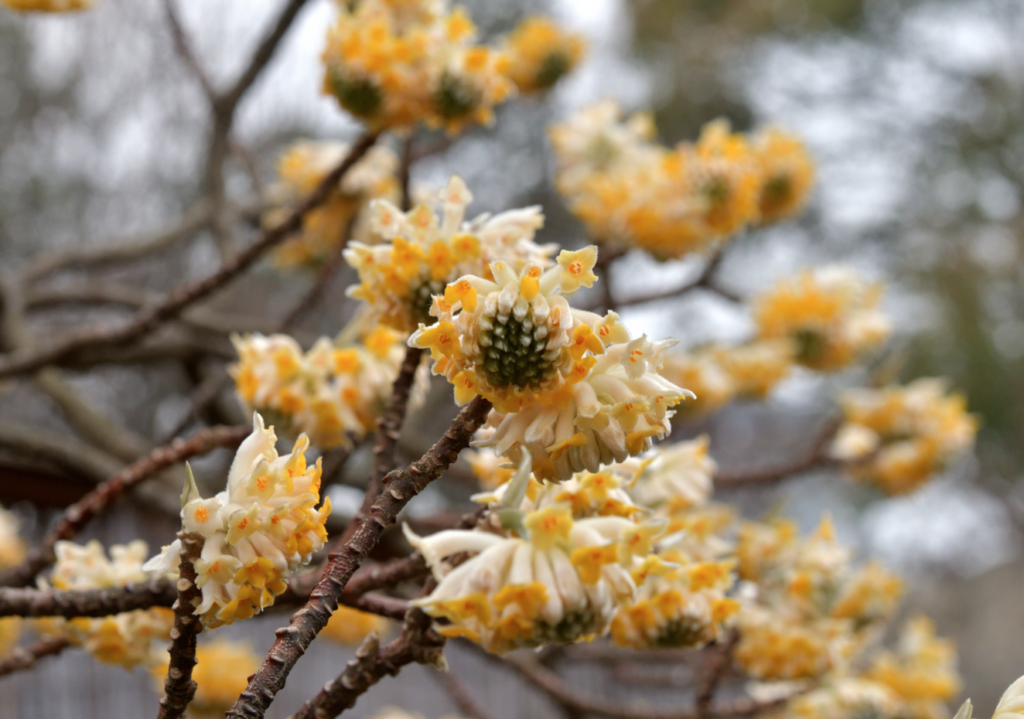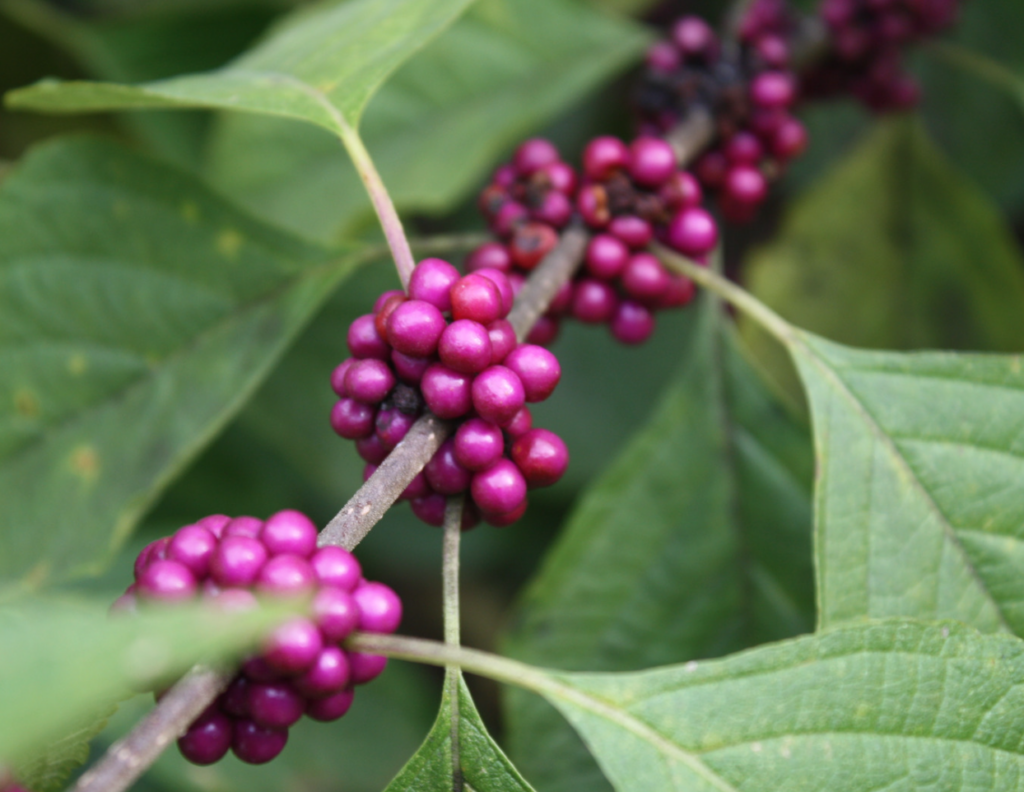When most gardens retreat into dormancy during the colder months, some plants continue to shine, providing beauty, habitat, and ecological benefits. Among them, Edgeworthia, Beauty Berry, and Witchhazel stand out as some of our favorite winter natives. Each of these plants tells a unique story of resilience and offers a stunning reminder that winter landscapes can be both abundant and useful.

Edgeworthia (Paperbush): A Scented Winter Star
Edgeworthia chrysantha, commonly known as Paperbush, brings a burst of golden joy to the winter garden. Native to the woodlands of China and the Himalayas, this plant thrives in partial shade and moist, well-drained soil. Its fragrant yellow flowers emerge in late winter, clustered like tiny suns against bare branches. Beyond its beauty, Edgeworthia provides early nectar for pollinators beginning to stir as temperatures rise.
Why we love it: The intoxicating fragrance and sculptural form of Edgeworthia make it a showstopper in any regenerative landscape. Its bark is also traditionally used to make paper, connecting us to a rich history of sustainable plant use.
Preferred Environment: Edgeworthia loves partial shade, a cool climate, and moist well draining soil

Beauty Berry: A Burst of Vibrant Purple
While its berries are its namesake, Callicarpa americana continues to flourish into winter. This native shrub produces clusters of electric purple berries that persist into the colder months, providing a critical food source for birds and wildlife when other options are scarce. Its graceful, arching branches create a striking silhouette in the winter landscape.

Why we love it: Beauty Berry balances ecological function with ornamental appeal. Its berries attract birds, its foliage supports native insects, and its striking color brightens the muted tones of winter. Usually found on the woodland’s edge, it brings balance and biodiversity to the ecosystem.
Preferred Environment: Beauty berry is highly adaptable and can tolerate a range of soil types, including sandy, loamy, or clay soils. It’s a partial shade to full sun-loving native. Plus it’s drought tolerant!

Witchhazel: Winter’s Healing Blooms
Witchhazel (Hamamelis virginiana) defies the season with its spidery, fragrant flowers that bloom in hues of yellow, orange, or red. This shrub is not only beautiful but also a medicinal powerhouse. Extracts from its bark and leaves are used in skincare such as healing sunburn, easing bruises, and repair because of their astringent and anti-inflammatory properties.

Why we love it: Witchhazel embodies the essence of resilience. It blooms in the harshest conditions and contributes to the health of both humans and ecosystems, offering medicine and early nectar for pollinators.
Preferred Environment: Witchhazel thrives in a variety of soils and adds interest to any permaculture garden.

Why Winter Blooms Matter
In permaculture, diversity and year-round productivity are key principles. Winter blooms like Edgeworthia, Beauty Berry, and Witchhazel provide ecological services when many other plants are dormant. They feed pollinators, support wildlife, and ensure that even in the depth of winter, landscapes remain vibrant and alive. Incorporating these winter garden design ideas into your space enhances beauty and supports pollinators in winter, fostering a thriving ecosystem.
By integrating these plants into your regenerative landscape, you’re not just adding beauty—you’re embracing sustainable landscaping for all seasons. Plants like these are among the best winter plants for Atlanta gardens, offering year-round blooms that bring life to the quieter months. They exemplify how winter landscaping in Atlanta can harmonize with permaculture principles, supporting biodiversity while showcasing the resilience of nature.
Winter is a time of subtle growth, and these drought-tolerant winter plants remind us that beauty and strength can thrive even in the quietest seasons. By choosing native plants for winter and beyond, you’re creating a habitat that works in harmony with the rhythms of nature—a true reflection of eco-friendly landscaping solutions.